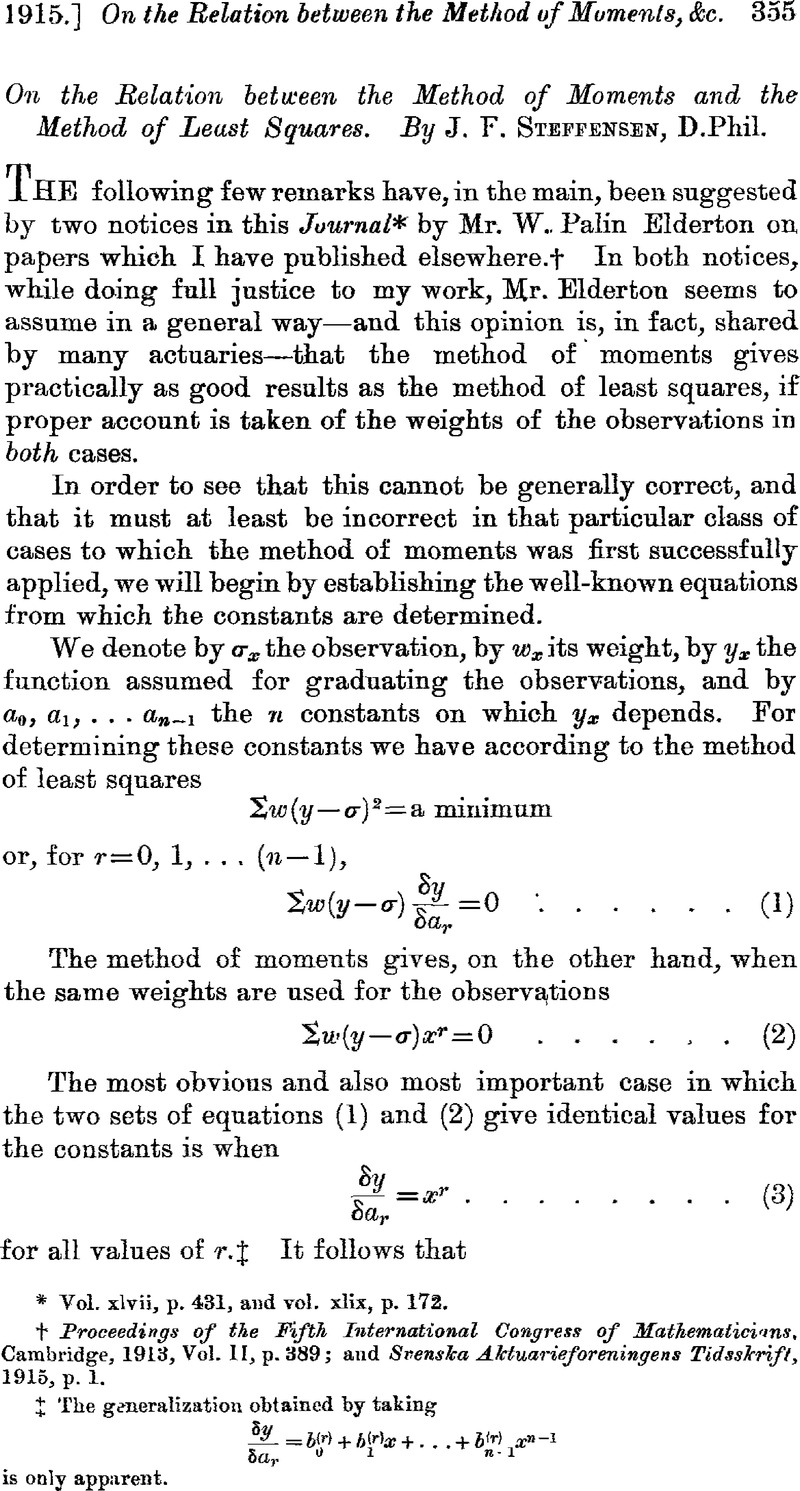No CrossRef data available.
Article contents
On the Relation Between the Method of Moments and the Method of Least Squares
Published online by Cambridge University Press: 18 August 2016
Abstract

Information
- Type
- Other
- Information
- Copyright
- Copyright © Institute and Faculty of Actuaries 1915
References
page 355 note * Vol. xlvii, p. 431, and vol. xlix, p. 172.
page 355 note † Proceedings of the Fifth International Congress of Mathematicians, Cambridge, 1913, Vol. II, p. 389 Google Scholar; and Svenska Aktuarieforeningens Tidsskrift, 1915, p. 1.
page 355 note ‡ The generalization obtained by taking
![]()
is only apparent.
page 357 note * At least as early as 1879 this fact was known to Danish actuaries, as appears from a book by Gram, J. P.: “Om Rakkendviklinger, bestemte ved Hjälp af de mindste Kvadraters Methode”, Copenhagen, 1879, p. 94.Google Scholar I quote the passage in translation, as it is not without historical interest.
“It is by researches into these ‘skew frequency-curves’ that I was originally led to the general theory which forms the basis of this paper. A considerable time ago Professor Oppermann suggested the use of the formula y = (a0 + a1x + a2x3 + …)e-x2 for representing the equation to such curves, and also pointed out that in order to determine the constants in this formula it will be necessary to employ equations of the form Σxiσx = Σxiyz, where the latter can be replaced by the corresponding integral. This mode of determination remained, for some time, something of a puzzle to me, and only through various researches of a more general nature did I succeed in realizing the true meaning of the method as a graduation by the method of least squares according to the formula y = (a0 + a1x + …)e-x2 , assuming the weights proportional to ex2 .”
Another important case will be dealt with below, viz., formula (10), assuming the weights proportional to ![]() . English actuaries will be familiar with this case through G. F. Hardy's book on the Construction of Tables of Mortality, p. 129.
. English actuaries will be familiar with this case through G. F. Hardy's book on the Construction of Tables of Mortality, p. 129.
page 358 note * Yet with incorrect weights.

